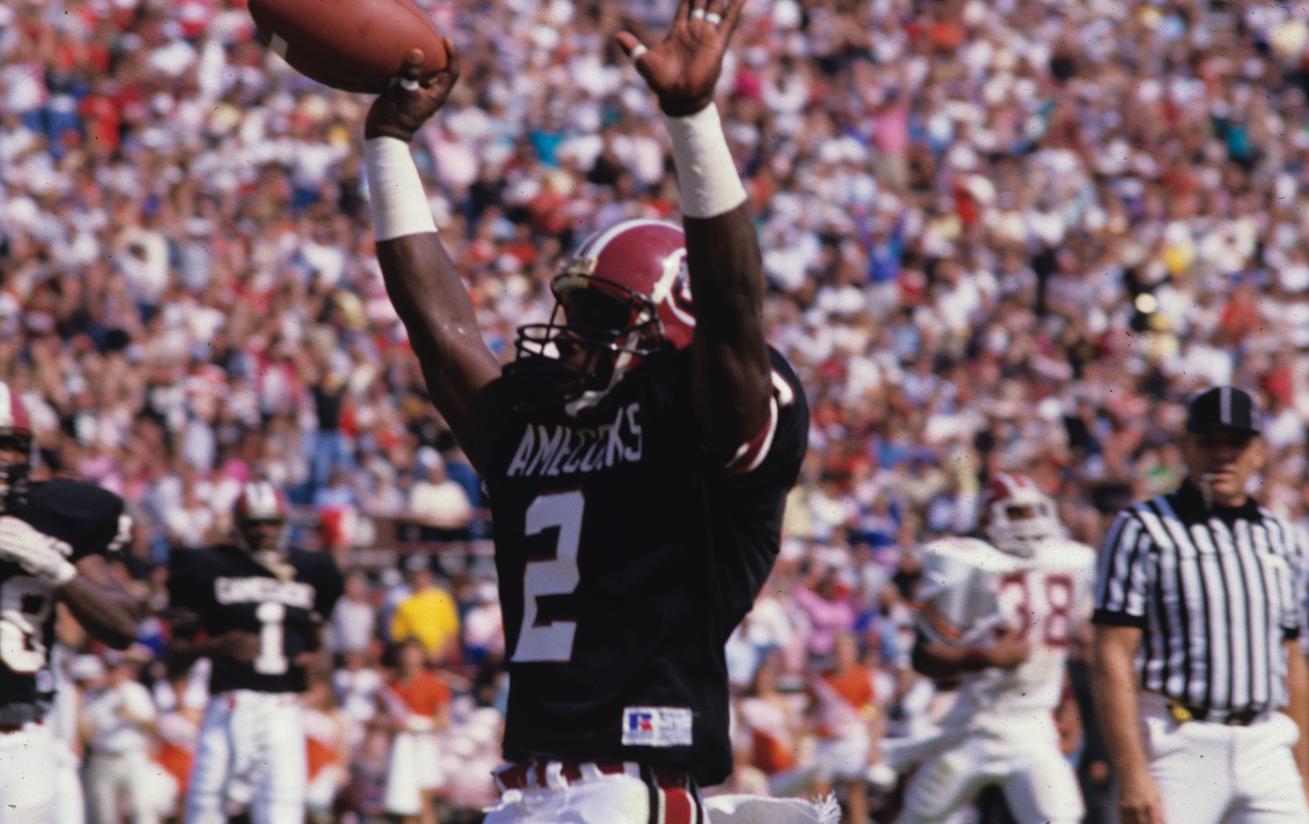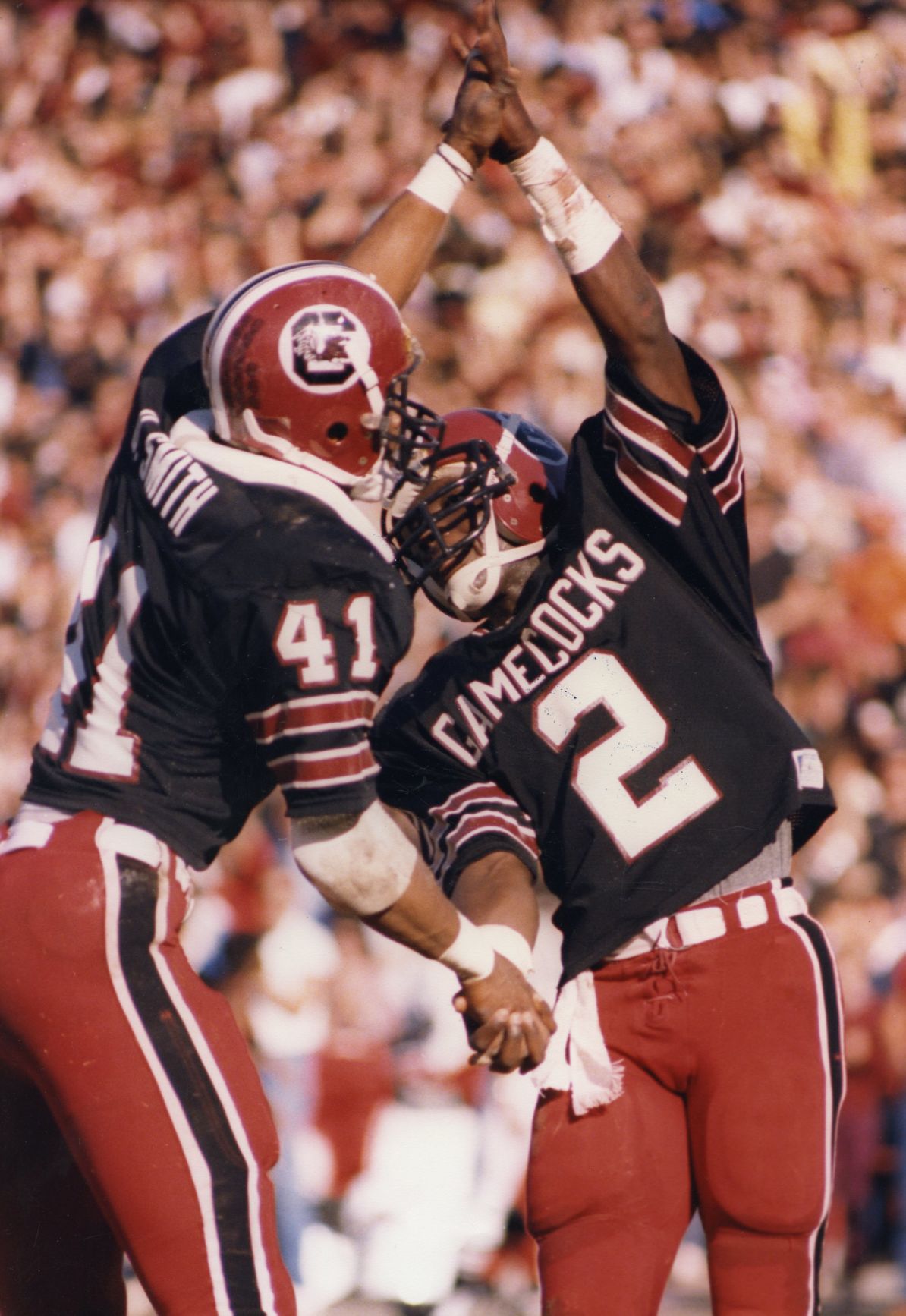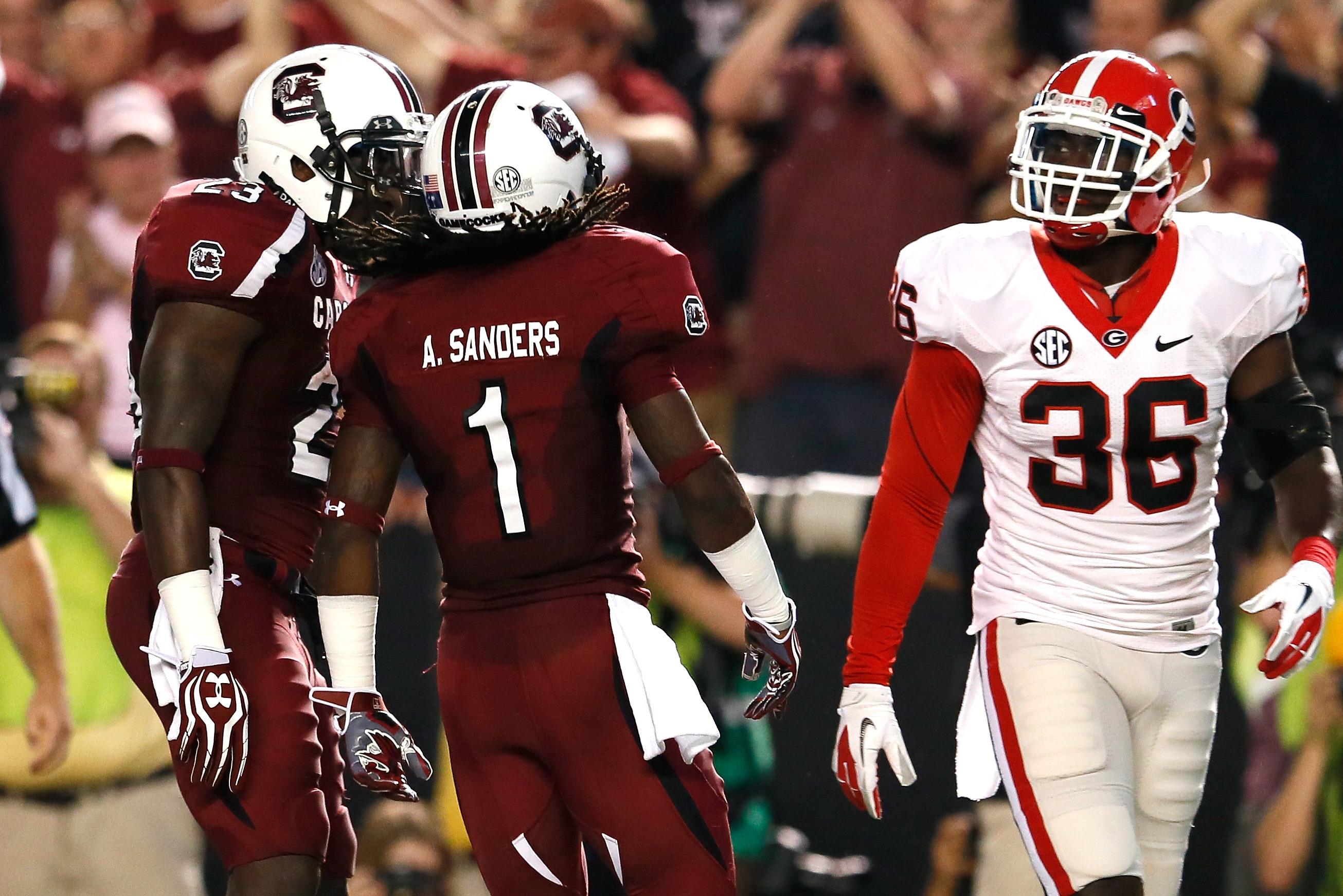Gamecock Fanatics
You are using an out of date browser. It may not display this or other websites correctly.
You should upgrade or use an alternative browser.
You should upgrade or use an alternative browser.
Countdown to Kickoff II: The Final 24 Days
- Thread starter Swayin
- Start date
Homebrewcock
GCF Top Poster
Homebrewcock
GCF Top Poster
Homebrewcock
GCF Top Poster
Vought O2U Corsair



https://en.wikipedia.org/wiki/Vought_O2U_CorsairThe Vought O2U Corsair was a 1920s biplane scout and observation aircraft. Made by Vought Corporation, the O2U was ordered by the United States Navy (USN) in 1927. Powered by a 400 hp (298 kW) Pratt & Whitney R-1340 Wasp engine, it incorporated a steel-tube fuselage structure and a wood wing structure with fabric covering. Many were seaplanes or amphibians.
Design and development
Two prototypes were ordered in 1926 and tested by the Navy Trial Board before the first production batches were ordered. In 1927, a total of 291 O2Us were produced. The O2U-2, -3 and -4 were ordered in 1928 with minor changes. By 1930 they were being superseded by the O3U which was basically similar to the O2U-4, one variant of which was fitted with the Grumman float, and were manufactured until 1936. A total of 289 were built.[1] Many of them had cowled engines and some had enclosed cockpits.
Operational history
The 600-690 hp (448-515 kW) Pratt & Whitney R-1690-42 Hornet engine was used to power Corsairs designated SU-1 to SU-4. The change in designation reflected their role as scouts (their larger engines and heavier weight precluded their use as floatplanes, and USN examples were only used on wheels from either carrier decks or land bases). A total of 289 SU designated aircraft were built for the USN. No fewer than 141 Corsairs were still serving with the US Navy and Marines when the US entered World War II.
The most famous "combat" operation of this aircraft was shooting the original King Kong off of the Empire State Building.
The name "Corsair" was used several times by Vought's planes; the O2U, Vought SBU Corsair in 1933, F4U in 1938, and the A-7 Corsair II in 1963.
Last edited by a moderator:
Vought OS2U Kingfisher

.jpg/1280px-Vought_OS2U_Kingfisher_with_rescued_airmen_off_Truk_on_1_May_1944_(80-G-227991).jpg)
A U.S. Navy Vought OS2U Kingfisher floatplane from the battleship USS North Carolina (BB-55) off Truk with nine aviators on board, awaiting rescue by USS Tang (SS-306), 1 May 1944. The plane had landed inside Truk lagoon to recover downed airmen. Unable to take off with such a load, it then taxied out to Tang, which was serving as lifeguard submarine during the 29 April-1 May carrier strikes on Truk.
Aviation cadet in OS2U Kingfisher at the Naval Air Base, Corpus Christi, Texas. (below)

Iowa launches Vought OS2U Kingfishers in 1944. (below)
_Planes.jpg)
Missouri recovers a Vought OS2U Kingfisher in 1944. (below)

https://en.wikipedia.org/wiki/Vought_OS2U_Kingfisher

Downed American airmen near Truk await rescue on the wings of an OS2U Kingfisher. (below)Operational history
The first 54 Kingfishers were delivered to the U.S. Navy beginning in August 1940 and six had been assigned to the Pearl Harbor-based Battle Force before the end of the same year. Many of the following 158 OS2U-2s were attached to flight training at Naval Air Station Pensacola, Florida, but 53 were assigned to equip the newly established Inshore Patrol Squadrons, based at NAS Jacksonville, Florida. In 1942, nine more Inshore Patrol Squadrons were established, all exclusively equipped with OS2N-1s built by the Naval Aircraft Factory.
The Kingfisher was widely used as a shipboard, catapult-launched scout plane on U.S. Navy battleships, heavy cruisers, and light cruisers during World War II and played a major role in support of shore bombardments and air-sea rescue. Two examples showing the plane's rescue capabilities include the recovery of World War I ace Eddie Rickenbacker and his crew from the Pacific in November 1942 and Lieutenant John A. Burns' unique use of the aircraft on 30 April 1944 to taxi airmen rescued from Truk Lagoon to the submarine Tang, which was serving rescue duty near the atoll on that date. In all, LT Burns rescued 10 survivors on two trips and was awarded the Navy Cross for his efforts.
.jpg/1280px-Vought_OS2U_Kingfisher_with_rescued_airmen_off_Truk_on_1_May_1944_(80-G-227991).jpg)
A U.S. Navy Vought OS2U Kingfisher floatplane from the battleship USS North Carolina (BB-55) off Truk with nine aviators on board, awaiting rescue by USS Tang (SS-306), 1 May 1944. The plane had landed inside Truk lagoon to recover downed airmen. Unable to take off with such a load, it then taxied out to Tang, which was serving as lifeguard submarine during the 29 April-1 May carrier strikes on Truk.
Aviation cadet in OS2U Kingfisher at the Naval Air Base, Corpus Christi, Texas. (below)

Iowa launches Vought OS2U Kingfishers in 1944. (below)
_Planes.jpg)
Missouri recovers a Vought OS2U Kingfisher in 1944. (below)

https://en.wikipedia.org/wiki/Vought_OS2U_Kingfisher
Here you go.I'd love to see a video of how that recapture of a Kingfisher via the deck crane actually happens/works.
The launch and recovery of Vought OS2U "Kingfisher" floatplanes aboard the South Dakota-class battleship USS Massachusetts (BB-59) in 1945. The aircraft were deployed to take part in a search and rescue operation. They return with the downed aviator safe and sound.
That was what I most wondered about! Great info!Notice how during the landing the ship is in a turn. My great uncle told me out this during his time on BB-56. The turn smoothed the seas and makes a nice landing area.






/cdn.vox-cdn.com/uploads/chorus_asset/file/22710140/1180638118.jpg)



